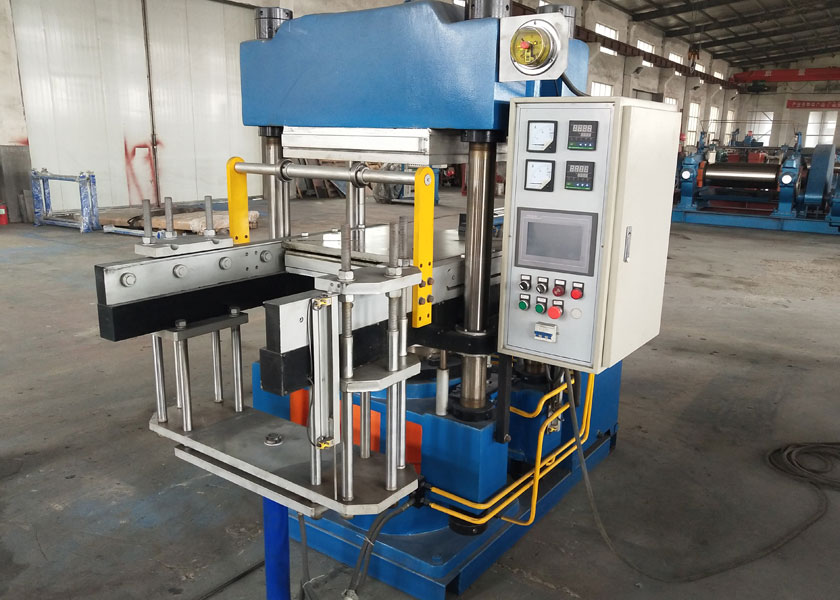
The duplex vulcanizing press is a specialized piece of industrial machinery used in the process of vulcanization. Vulcanization refers to the process of hardening rubber or other elastomers through the application of heat, pressure, and chemical agents such as duplex vulcanizing press . This process is essential in the production of durable rubber products, which are used in industries ranging from automotive to construction. The duplex vulcanizing press, in particular, is an advanced version of traditional vulcanizing presses, offering improved efficiency, higher production capacities, and enhanced control over the vulcanization process.
The Concept of Vulcanization
Before diving into the workings of the duplex vulcanizing press, it’s important to understand the basic concept of vulcanization. In the rubber industry, vulcanization strengthens raw rubber, which is naturally sticky, soft, and prone to wear and tear. By chemically bonding sulfur with rubber chains, vulcanization creates cross-links between the molecules. This improves the elasticity, durability, and heat resistance of rubber products. Vulcanized rubber is the foundation of many everyday products, such as tires, shoe soles, hoses, and industrial belts.
Duplex Vulcanizing Press: What Makes It Special?
The duplex vulcanizing press is designed to carry out vulcanization on a larger scale with more precision than single-plate presses. The term “duplex” refers to the dual functionality of the press, which can handle two layers or two sets of products simultaneously. This dual-layer capability doubles production efficiency, making it an ideal machine for companies that produce large volumes of rubber products. The press typically consists of two hydraulic plates, which apply uniform pressure and heat to the rubber materials placed between them.
Structure and Components of a Duplex Vulcanizing Press
The structure of a duplex vulcanizing press is robust and designed to withstand high pressure and temperature. It includes:
- Upper and lower heating plates: These plates distribute heat evenly across the rubber material. The uniform temperature ensures that the vulcanization process occurs consistently across all parts of the product.
- Hydraulic system: The hydraulic system applies the necessary pressure to compress the rubber material between the plates. This pressure is crucial for ensuring that the vulcanization process is thorough and complete.
- Temperature control system: Precise temperature control is critical in vulcanization, as even slight variations can affect the quality of the final product. The temperature control system in a duplex press allows operators to maintain optimal heating conditions.
Applications of Duplex Vulcanizing Presses
Duplex vulcanizing presses are widely used in industries that require mass production of rubber products. Common applications include:
- Automotive industry: Vulcanized rubber is a key material in the production of tires, belts, hoses, and gaskets used in vehicles.
- Footwear industry: Soles of shoes, especially those requiring high durability and flexibility, are often made using vulcanized rubber.
- Industrial equipment: Various seals, gaskets, and belts in machinery are made from vulcanized rubber to ensure they can withstand harsh working conditions.
- Aerospace and defense sectors: These industries often use vulcanized rubber components for specialized purposes that require extreme durability and resistance to heat.
Advantages of Using a Duplex Vulcanizing Press
- Increased Efficiency: With two plates operating simultaneously, a duplex press doubles the production output compared to traditional single-plate presses.
- Consistent Quality: The press ensures even pressure and heat distribution, which results in consistent vulcanization, reducing the chances of product defects.
- Energy Efficiency: Modern duplex presses are designed to optimize energy usage by using advanced heat recovery systems and efficient hydraulic operations.
- Versatility: This type of press is versatile enough to handle different rubber materials and product types, making it an asset to companies that manufacture a wide range of items.
Challenges and Considerations
Despite its advantages, there are some challenges associated with duplex vulcanizing presses. First, the initial investment cost can be high, especially for smaller businesses. Maintenance of these machines also requires specialized knowledge, as both the hydraulic and temperature control systems must be kept in peak condition to avoid production delays. Additionally, the vulcanization process itself can emit harmful fumes, necessitating proper ventilation and safety measures in the workplace.
Innovations in Duplex Vulcanizing Technology
Recent advancements in vulcanizing technology have led to significant improvements in the design and functionality of duplex presses. For example, automation is becoming a major trend in the industry, with many duplex presses now featuring fully automated controls for temperature, pressure, and timing. These machines can also be integrated into larger production lines, enabling seamless manufacturing processes. Additionally, eco-friendly designs that reduce energy consumption and minimize waste are gaining popularity, in line with the global shift toward sustainable manufacturing practices.
Maintenance and Upkeep of Duplex Vulcanizing Presses
To maintain optimal performance, duplex vulcanizing presses require regular maintenance. This includes checking hydraulic fluid levels, ensuring the heating elements are functioning correctly, and inspecting the press for any signs of wear or damage. Preventative maintenance is key to avoiding costly downtime and ensuring that the press continues to deliver high-quality results. Many modern presses are equipped with diagnostic tools that alert operators to potential issues before they escalate into major problems.
Conclusion: The Future of Duplex Vulcanizing Presses
As industries continue to demand more efficient, reliable, and eco-friendly manufacturing processes, the duplex vulcanizing press remains a critical tool in the rubber production sector. Its ability to produce high volumes of vulcanized rubber with precision and consistency makes it indispensable for manufacturers. Moving forward, innovations in automation, energy efficiency, and sustainability will likely drive further improvements in these machines, ensuring they continue to meet the evolving needs of the rubber industry.